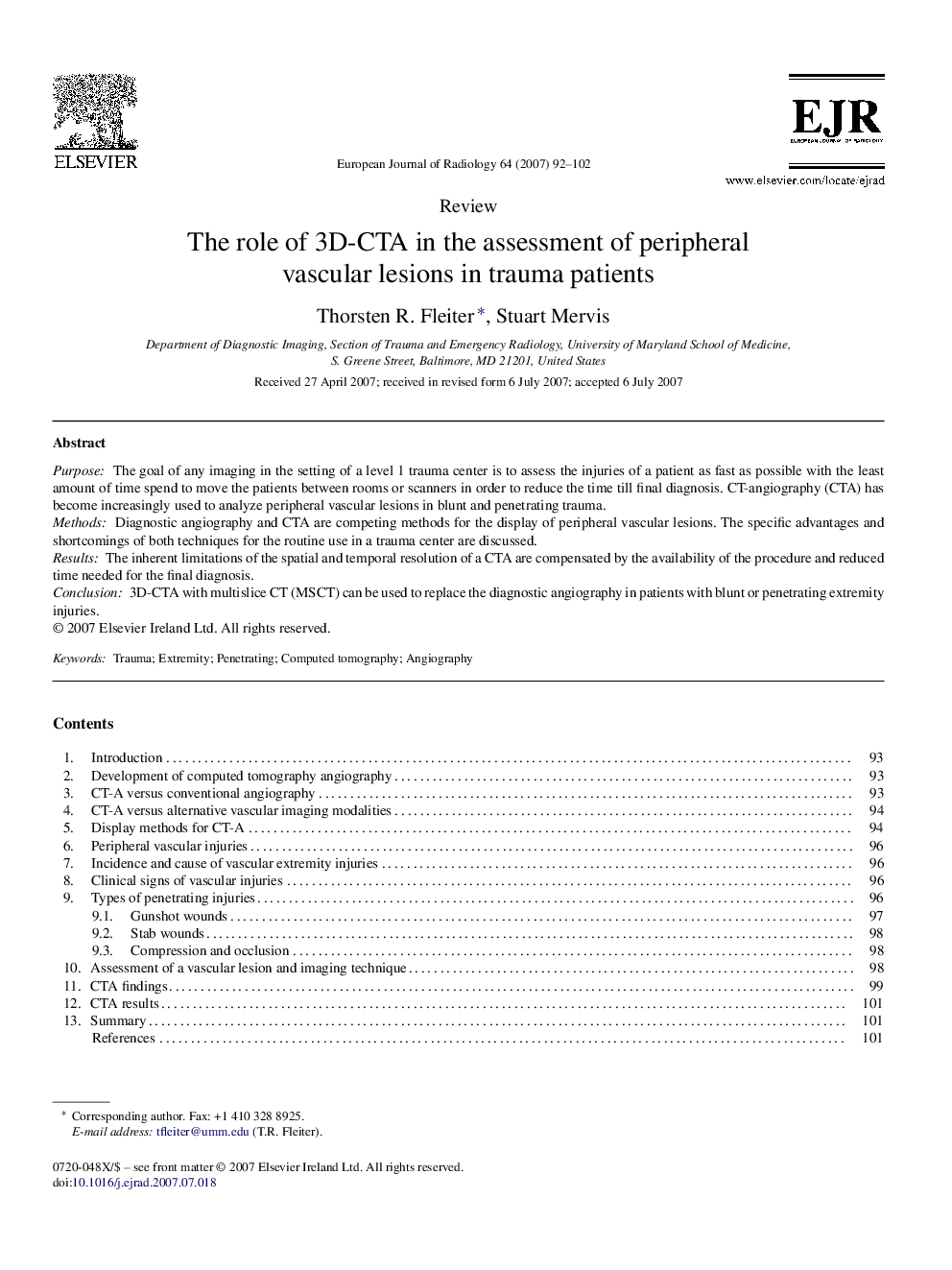| Article ID | Journal | Published Year | Pages | File Type |
|---|---|---|---|---|
| 4228218 | European Journal of Radiology | 2007 | 11 Pages |
PurposeThe goal of any imaging in the setting of a level 1 trauma center is to assess the injuries of a patient as fast as possible with the least amount of time spend to move the patients between rooms or scanners in order to reduce the time till final diagnosis. CT-angiography (CTA) has become increasingly used to analyze peripheral vascular lesions in blunt and penetrating trauma.MethodsDiagnostic angiography and CTA are competing methods for the display of peripheral vascular lesions. The specific advantages and shortcomings of both techniques for the routine use in a trauma center are discussed.ResultsThe inherent limitations of the spatial and temporal resolution of a CTA are compensated by the availability of the procedure and reduced time needed for the final diagnosis.Conclusion3D-CTA with multislice CT (MSCT) can be used to replace the diagnostic angiography in patients with blunt or penetrating extremity injuries.
